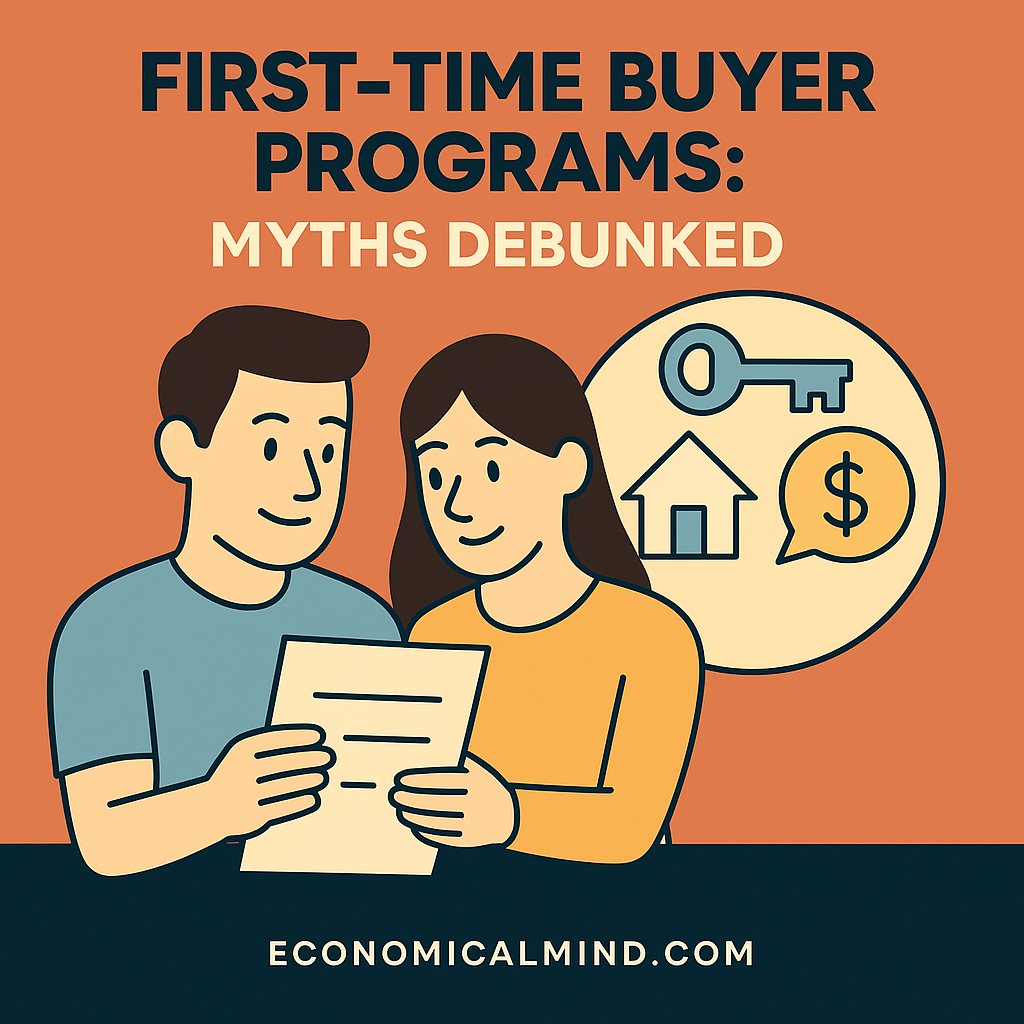
Buying your first home is exciting—but it’s also full of misinformation. From who qualifies for first-time buyer programs to what assistance they actually provide, myths often keep people from exploring valuable opportunities.
Let’s clear up the most common misconceptions so you can take advantage of programs designed to help, not confuse.
Myth 1: First-time buyer programs are only for young people
Age has nothing to do with eligibility. “First-time buyer” simply means you haven’t owned a home in the past three years. That means even if you’ve owned property before, you might still qualify again after that time period.
Whether you’re 25 or 55, you could benefit from down payment assistance or reduced interest rates if you meet other program requirements.
Myth 2: You need perfect credit to qualify
Many buyers assume first-time programs are off-limits if their credit isn’t spotless. In reality, programs often cater to those with moderate credit scores.
For example, FHA loans allow credit scores as low as 580 with a 3.5% down payment. Some local and state programs even help applicants work toward improving their credit before approval.
Myth 3: You have to make a large down payment
This is one of the biggest myths of all. Many first-time buyer programs are designed to make homeownership more accessible—not harder.
With options like USDA, FHA, and VA loans, down payments can be as low as 0% to 3.5%. Plus, there are state and city grants that help cover closing costs and upfront expenses.
Myth 4: Assistance programs are only for low-income buyers
While many programs are income-based, “low income” doesn’t necessarily mean you have to earn very little. Most programs set income limits based on the median income of your area, so middle-class families often qualify too.
It’s worth checking your local housing authority’s website to see if you fall within the eligible range—you might be surprised.
Myth 5: You can only use one program at a time
Some buyers think they have to choose between federal, state, or local programs—but in many cases, you can combine them.
For instance, you might use a state down payment grant with an FHA loan. The key is ensuring each program allows “stacking” benefits, which your lender can help you verify.
Myth 6: Applying for assistance takes too long
The process can sound intimidating, but most programs are streamlined through approved lenders who guide you through the paperwork.
If you’re prequalified and provide the right documentation early, applying for assistance usually adds minimal time to your loan approval.
Myth 7: These programs aren’t worth the effort
It’s easy to assume small grants or lower rates won’t make much difference—but they can save thousands. A 0.5% lower interest rate, for example, can mean huge savings over a 30-year mortgage.
First-time buyer programs are built to make homeownership more achievable, and skipping them often means leaving free money on the table.
Real ways to get started
- Check your local housing agency or HUD-approved resources
- Compare FHA, VA, and USDA loan options
- Ask your lender about combining programs
- Attend a homebuyer education class (some programs require it)
- Review credit and income requirements early to prepare
Key takeaway
First-time buyer programs aren’t too good to be true—they’re just misunderstood. By separating fact from fiction, you can unlock real savings, lower your upfront costs, and move closer to owning your first home with confidence.
